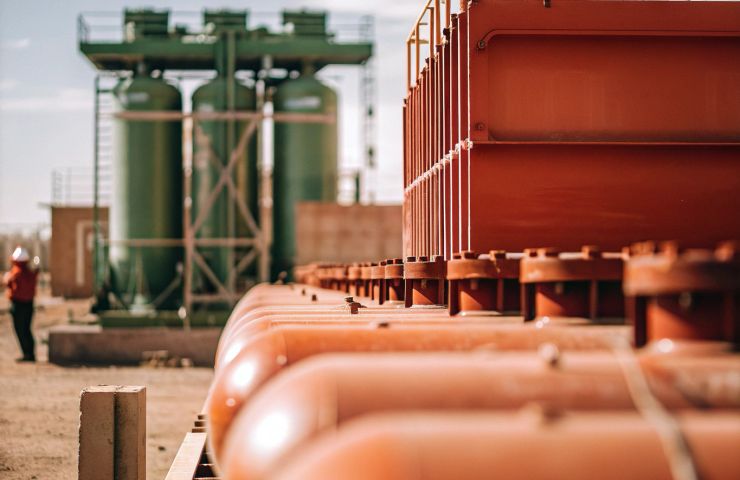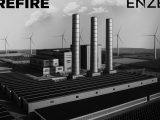
Pure Hydrogen Gas Turbine Powers Ordos Renewable Energy & Ammonia Hub
August 13, 2025Believe it or not, Mingyang Hydrogen just shipped its game-changing 30 MW-class pure hydrogen gas turbine called Jupiter-1 from Wuxi over to the Otoke High-Tech Industrial Development Zone in Etuoke Banner, Ordos, Inner Mongolia—slightly ahead of the original timeline. Marketed as the world’s largest single-unit pure hydrogen turbine, Jupiter-1 will kick off the hydrogen-to-electricity storage demo at Shenzhen Energy Group’s wind-solar-hydrogen integrated green ammonia complex. This isn’t happening in a vacuum: back in June 2025, the National Energy Administration (NEA) greenlit pilots for hydrogen/ammonia blending and 100 percent hydrogen-fired turbines, giving the project the policy nudge it needed. By flipping extra wind and sun into hydrogen, then back into dispatchable, zero-carbon power, the Ordos site is squarely aimed at slashing renewable curtailment and smoothing out fickle grids—an end-to-end closed-loop energy system in action.
Company Background
Founded in 2022, Mingyang Hydrogen is the hydrogen-focused offshoot of Mingyang Smart Energy. From day one, they’ve zeroed in on designing turbine combustors and choosing materials that can handle hydrogen’s notoriously high flame speed and embrittlement risks. The fact that they took a turbine from concept to a 30 MW-class prototype in just two years speaks volumes about China’s growing prowess in hydrogen turbine manufacturing.
Technical Rundown
At its heart, this is a closed-loop electricity–hydrogen–electricity system. Here’s the play-by-play: when wind and solar farms pump out more juice than the grid can swallow, electrolyzers kick in to convert that surplus into green hydrogen for hydrogen storage. Later, when renewables dip, Jupiter-1 revs up on 100 percent hydrogen fuel, delivering flexible, zero-emission electricity at a moment’s notice. Thanks to advanced alloys, the turbine sidesteps embrittlement, and a selective catalytic reduction setup keeps NOx emissions in check.
Strategic & Policy Backing
The NEA’s June 2025 notice didn’t just wave the green flag; it laid out a national framework for trialing hydrogen/ammonia blending and pure hydrogen turbine power. Over in Ordos, local authorities fast-tracked grid hookups for new renewables and sped up land permits. As part of Shenzhen Energy Group’s integrated green ammonia hub, Jupiter-1 will validate performance benchmarks, storage economics, and regulatory compliance—essential steps before scaling up.
Industry Context
Inner Mongolia is already a renewable powerhouse, boasting over 20 GW of wind and solar capacity—but up to 20 percent of that green energy often goes unused. That’s where closed-loop systems shine: they soak up the excess, store it, and smooth out supply when you need it. Globally, pure hydrogen gas turbines above 10 MW have mostly stayed in pilot mode. Getting to 30 MW in a live setting? That’s a seriously bold leap. Plus, pairing it with integrated green ammonia synthesis means there’s an immediate offtake for the hydrogen, creating a transportable energy vector that pushes industrial decarbonization forward.
Comparative Context
Until now, most pure hydrogen turbine trials—mainly in Europe and North America—peaked around 5–10 MW and focused on proof-of-concept rather than real-world ops. Those efforts typically retrofitted natural gas cores instead of building hydrogen-first machines. Mingyang Hydrogen’s Jupiter-1 flips the script: it’s purpose-built, born from domestic R&D, and already hooked into a multi-vector renewables and green ammonia setup. Rumors of bigger test rigs exist, but no other commercial single-unit turbine matches this scale and operational context.
Where We Go From Here
Once Jupiter-1 is up and running, the team will gather operational data to evaluate the economics of hydrogen storage—think round-trip efficiency, uptime, ramp rates, and lifecycle costs versus batteries or hydro. They’ll also push the selective catalytic reduction system through long-term cycles to see how well it controls NOx. If all goes to plan, this could spark a wave of similar projects across China’s renewable hotspots and help shape global standards for zero-emission power and hydrogen infrastructure.
In essence, rolling out the world’s largest single-unit pure hydrogen gas turbine in a live, closed-loop renewables setup is a watershed moment for the hydrogen economy. By knitting together policy support, cutting-edge manufacturing, and green ammonia offtake, the Ordos project might just become the blueprint for mainstream renewable energy integration. As real-world results start streaming in, stakeholders will finally get the clear technical, economic, and regulatory insights they need to push zero-emission power from demo mode into everyday reality.



 With over 15 years of reporting hydrogen news, we are your premier source for the latest updates and insights in hydrogen and renewable energy.
With over 15 years of reporting hydrogen news, we are your premier source for the latest updates and insights in hydrogen and renewable energy.